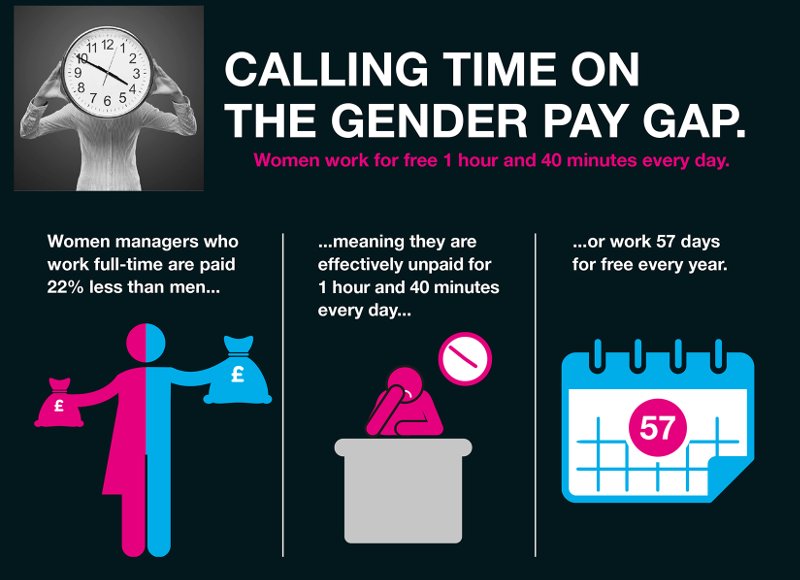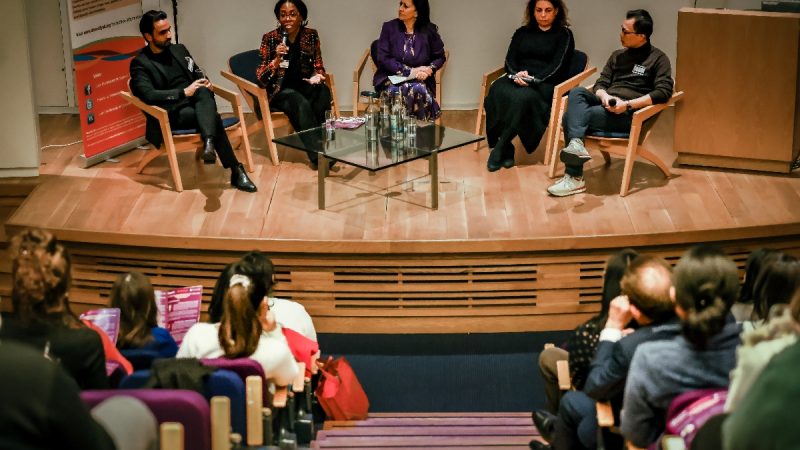Gender pay gap grows after childbirth

On average, women in paid work receive about 18% less per hour than men shows IFS research published today (23rd August 2016). Funded by the Joseph Rowntree Foundation, the research shows that the wage gap is smaller when comparing young women – before they become mothers – with their male counterparts. But the gap widens consistently for 12 years after the first child is born, by which point women receive 33% less pay per hour than men.
The widening of the hourly wage gap after childbirth is associated with reduced hours of paid work, but not because women see an immediate cut in hourly pay when they reduce their hours. Rather, women who work half-time lose out on subsequent wage progression, meaning that the hourly wages of men (and of women in full-time work) pull further and further ahead. In addition, women who take time out of paid work altogether and then return to the labour market miss out on wage growth.
Detailed findings include:
- The gap in average hourly wages between male and female employees has been falling over the past two decades - the current gap of 18% compares with 28% in 1993 and 23% in 2003 - but not among graduates or people with A levels
- For the mid- and high-educated, the gender wage gap is essentially the same as it was 20 years ago. It is only among the lowest-educated (those with less than A levels) that the gender wage gap has been steadily declining. The other main driver of the fall in the overall gender wage gap has been an increase in the education levels of women relative to men.
- The gender wage gap increases gradually after the arrival of children. Possible explanations include mothers missing out on promotions or simply accumulating less labour market experience
A big difference in employment rates between men and women opens up upon the arrival of the first child and is highly persistent. Before the first child is born, the employment rates of men and women are almost identical. But between the year before and the year after the birth of the child, women’s employment rates drop by 33 percentage points for those with GCSEs, 19ppts for those with A levels and 16ppts for graduates – while barely changing for men. By the time that child is aged 20, women’s employment rates still have not caught up again with men’s.
- By 20 years after the birth of their first child, women have on average been in paid work for four years less than men and have spent nine years less in paid work of more than 20 hours per week.
- Taking time out of paid work is associated with lower wages when returning
- Comparing women who had the same hourly wage before leaving paid work, wages when they return are on average 2% lower for each year spent out of paid work in the interim.
This apparent wage penalty for taking time out of paid work is greater for more highly educated women, at 4% for each year out of paid work. The lowest-educated women (who actually take more time out of paid work after childbirth) do not seem to pay this particular penalty, probably because they have less wage progression to miss out on.
Working low numbers of hours is associated with less wage progression:
- There is no immediate drop in hourly wages on average when women reduce their hours to 20 or fewer per week. Instead, the lower hourly wages observed in lower-hours jobs appear to be the cumulative effect of a lack of wage progression.
- The hourly wages of women working half-time (or less) appear to do no more than change in line with economy-wide wages. In other words, the wages of these women appear not to benefit at all from increases in labour market experience. This is true for high- and low- educated alike.
Robert Joyce, Associate Director at IFS and an author of the report, said: “The gap between the hourly pay of higher-educated men and women has not closed at all in the last 20 years. The reduction in the overall gender wage gap has been the result of more women becoming highly educated, and a decline in the wage gap among the lowest-educated.
“Women in jobs involving fewer hours of work have particularly low hourly wages, and this is because of poor pay progression, not because they take an immediate pay cut when switching away from full-time work. Understanding that lack of progression is going to be crucial to making progress in reducing the gender wage gap.”
About the IFS Research
The briefing note ‘The gender wage gap’, by Monica Costa Dias, William Elming and Robert Joyce, will be published online at http://www.ifs.org.uk/publications/8428. The Joseph Rowntree Foundation is an independent organisation working to inspire social change through research, policy and practice. For more information visit jrf.org.uk




